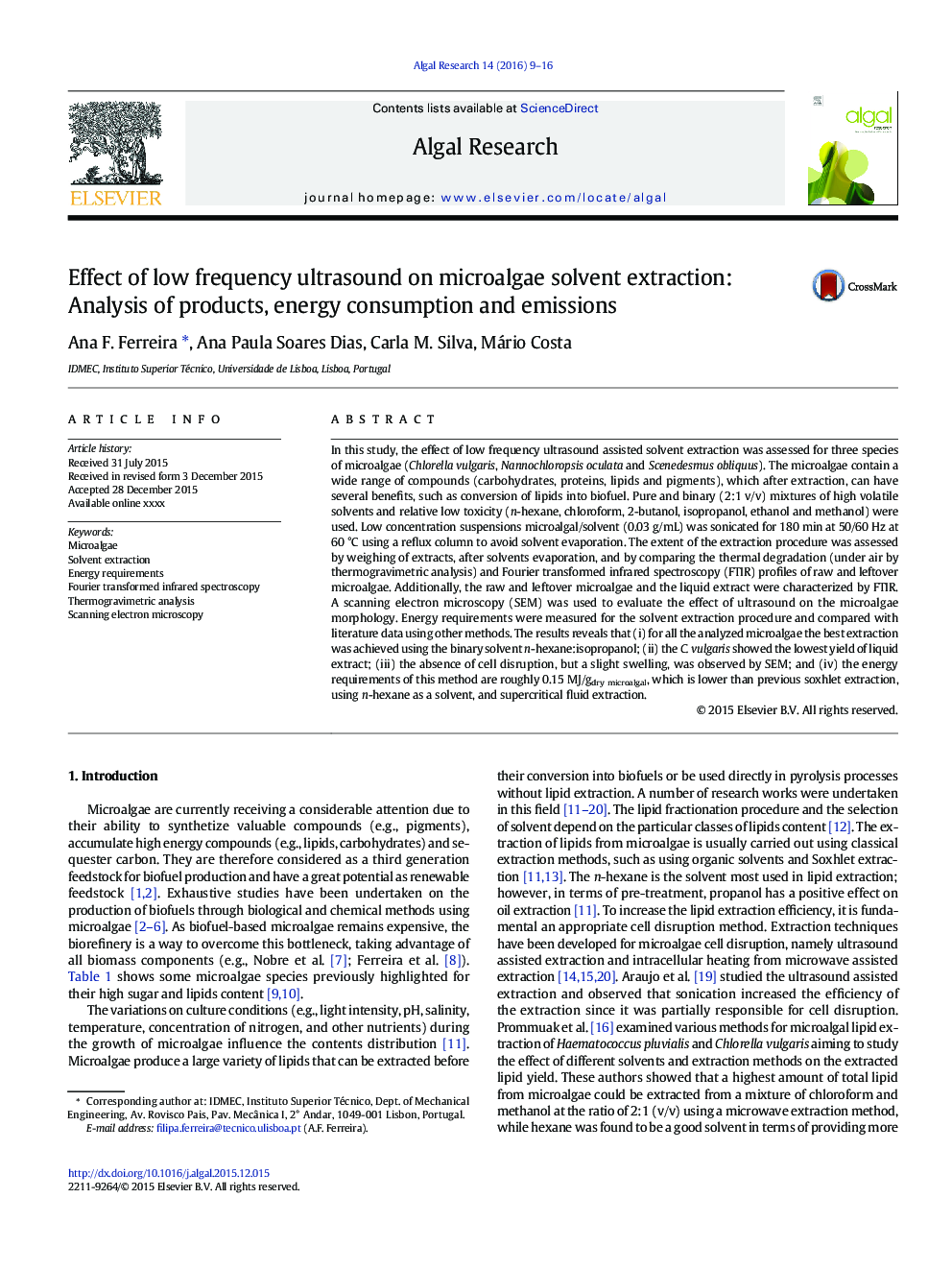| Article ID | Journal | Published Year | Pages | File Type |
|---|---|---|---|---|
| 8087382 | Algal Research | 2016 | 8 Pages |
Abstract
In this study, the effect of low frequency ultrasound assisted solvent extraction was assessed for three species of microalgae (Chlorella vulgaris, Nannochloropsis oculata and Scenedesmus obliquus). The microalgae contain a wide range of compounds (carbohydrates, proteins, lipids and pigments), which after extraction, can have several benefits, such as conversion of lipids into biofuel. Pure and binary (2:1 v/v) mixtures of high volatile solvents and relative low toxicity (n-hexane, chloroform, 2-butanol, isopropanol, ethanol and methanol) were used. Low concentration suspensions microalgal/solvent (0.03 g/mL) was sonicated for 180 min at 50/60 Hz at 60 °C using a reflux column to avoid solvent evaporation. The extent of the extraction procedure was assessed by weighing of extracts, after solvents evaporation, and by comparing the thermal degradation (under air by thermogravimetric analysis) and Fourier transformed infrared spectroscopy (FTIR) profiles of raw and leftover microalgae. Additionally, the raw and leftover microalgae and the liquid extract were characterized by FTIR. A scanning electron microscopy (SEM) was used to evaluate the effect of ultrasound on the microalgae morphology. Energy requirements were measured for the solvent extraction procedure and compared with literature data using other methods. The results reveals that (i) for all the analyzed microalgae the best extraction was achieved using the binary solvent n-hexane:isopropanol; (ii) the C. vulgaris showed the lowest yield of liquid extract; (iii) the absence of cell disruption, but a slight swelling, was observed by SEM; and (iv) the energy requirements of this method are roughly 0.15 MJ/gdry microalgal, which is lower than previous soxhlet extraction, using n-hexane as a solvent, and supercritical fluid extraction.
Keywords
Related Topics
Physical Sciences and Engineering
Energy
Renewable Energy, Sustainability and the Environment
Authors
Ana F. Ferreira, Ana Paula Soares Dias, Carla M. Silva, Mário Costa,
